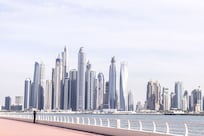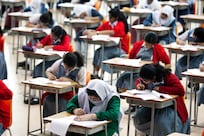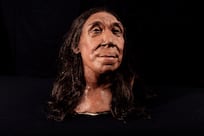LONDON // Didier Drogba and Nicolas Anelka again provided evidence of why they are the best strike partnership in world football but Chelsea's defence let them down as they failed to win for the fourth successive game. Drogba scored twice and Anelka once as Carlo Ancelotti's men twice led Everton at Stamford Bridge. But a defensive horror show saw Everton peg them back as the hosts dropped two potentially priceless points in the Premier League race.
Chelsea went into the game on the back of their first really unconvincing run of the season, with defeat to Manchester City in the League sandwiched by an exit from the Carling Cup to Blackburn and a draw at home with Apoel Nicosia last Wednesday. Yet what Everton would give for having those problems, with Chelsea two points clear at the top of the table going into the game. David Moyes's side, by contrast, had lost seven of their opening 15 League games and were struggling under the weight of an horrendous injury list.
And Everton had not beaten Chelsea since November 2000, a run stretched for 23 games, including last season's FA Cup Final. But Everton belied their perilous position with a high-octane start that deservedly brought them the lead after 12 minutes. Louis Saha and Jo had both gone close before they made the breakthrough in the most fortuitous of circumstances. Frank Lampard fouled Steven Pienaar wide on Everton's right, and Saha rose highest to meet Leighton Baines's inswinging delivery - only to see the ball hit the post before rebounding off the unfortunate Petr Cech's back and trickling apologetically over the line.
It was the least the visitors deserved for taking the game to Chelsea, yet they were pegged back within six minutes. Ricardo Carvalho was the instigator of the move, striding forward before feeding Lampard, who laid the ball off perfectly for Drogba to curl home superbly from just inside the box for his 17th goal of an already prolific season. A huge amount of Drogba's success has been down to his strike partnership with Anelka, and after the Ivorian had his moment it was the Frenchman's turn as Chelsea hit the front on 22 minutes.
Saha was the fall guy this time, twice failing to clear a corner and watching in horror as Branislav Ivanovic laid the ball off to Anelka, who made no mistake from eight yards out. Chelsea were in complete control, but stunningly the game was level in the fifth minute of injury-time at the end of the half as Yakubu, who had come on for the injured Jo, fired home with virtually his first touch after Chelsea failed to clear from a goalmouth scramble.
The hosts came out for the second half with renewed vigour, forcing a succession of corners and free kicks - and that pressure told just before the hour mark as Drogba scored his second . It was clever play from the striker, who peeled away to the back post, meaning he had only the diminutive Steven Pienaar to challenge him as Ivanovic whipped the ball across. It was no contest, and Drogba's volley flashed past Howard.
Yet Chelsea were again pegged back as their defence followed Everton's lead by falling to pieces. It may have been fortunate again, but Cech was caught in no-man's land as Drogba's attempted headed clearance of a free kick only hit Saha on the back of the head and looped in to leave Ancelotti fuming as his side conceded their 10th goal in just over three-and-a-half games. Howard was forced into saves from Michael Ballack and Drogba as Chelsea searched for a fourth. But Everton held firm for a point that they fully deserved for exploiting Chelsea's shambolic defending.
sports@thenational.ae




